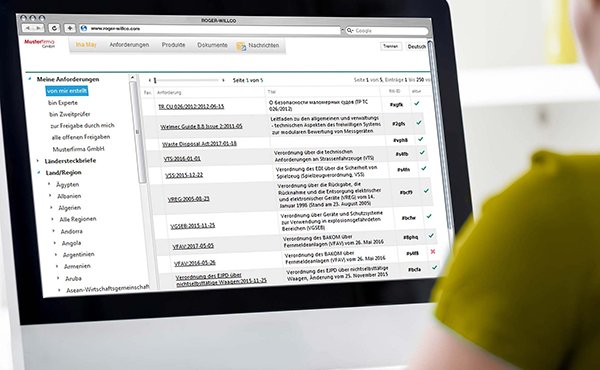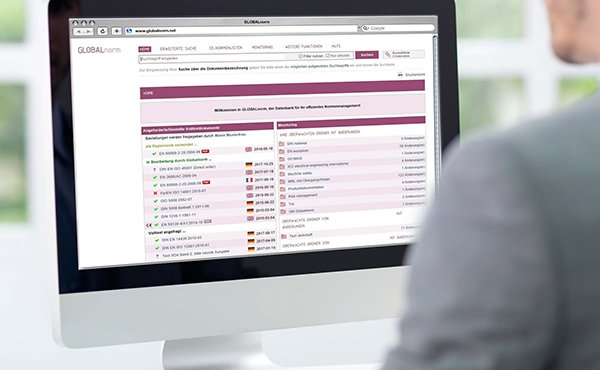A virtual training course for standardization experts was held by DKE on January 31, 2023. This training focused on the various aspects of the approval process for harmonized standards (hEN) to be published. This approval process is referred to as "HAS assessment" (harmonized standards). The training included the following topics:
- Introduction to the HAS system
- Roles in the HAS system
- HAS assessment
- Non-Compliant Assessment
- Listing in the Official Journal of the European Union (OJEU)
As widely reported, the EU Commission makes the final decision whether a standard with a standardization mandate in connection with a harmonization legislation is published in the Official Journal of the European Union. The legal background to this is provided by Article 10(6) of the so-called Standards Regulation (EU) 1025/2012:
"Where a harmonized standard satisfies the requirements which it is intended to cover and which are laid down in the relevant Union harmonization legislation, the Commission shall without delay publish a reference to such harmonized standard in the Official Journal of the European Union or by other means in accordance with the conditions laid down in the relevant Union harmonization legislation."
By requirements we mean, for example, the essential health and safety requirements from Annex I of the Machinery Directive or the EMC requirements from Annex I No. 1 of the EMC Directive (emitted interference and immunity to interference). Two players are decisive for the test (the so-called HAS assessment):
- the HAS Contractor and
- the HAS consultants.
To manage the budget as well as the cooperation with the so-called HAS-Consultants, the EU Commission has again appointed the management consulting company EY as HAS-Contractor. The content assessment of the standards is carried out by the HAS consultants. If the HAS assessment is successful, these references of hENs will be published in OJEU.
Regarding the HAS Consultants, there is a list of tasks that has been changed in one significant place:
- HAS assessment – Review of the developed standards based on the standardization mandate (mandate) with approx. 75% time expenditure.
- Communication – The HAS consultant is in contact with the technical committees and communicates, among other things, the position of the EU Commission. But recently they are only allowed to participate in the meetings of the committees with the approval of EY (!). In essence, the task is to explain the respective assessment result. This entire block of tasks is supposed to take up about 25% of the time.
The following items are not within the scope of HAS consultants:
- Direct involvement in standardization work.
- Concrete advice to technical committees on how standards can be made compliant if the HAS Assessment is negative.
- Carrying out a HAS assessment when the documents are sent directly to the consultants by the European standards organizations CEN, CENELEC and ETSI.
- Subsequent modification of the HAS Assessment results.
- Participation in technical committee meetings without EY approval.
In this context, the tasks of the CEN/CENELEC Management Center (CCMC) should also be mentioned:
- Coordination of comments on Standardization Requests via so-called Standardization Requests ad-hoc Groups (SRAHG) and contact with the EU Commission.
- Quality Check - review of the submitted documents for the HAS assessment (new!)
- Upload of the documents for the HAS assessment on the HAS platform
- Review and forwarding in case of objection to the HAS assessment result by the technical committee.
If needed, the technical committee or secretary can submit a request to contact the HAS consultant to resolve the non-compliance issues. The request should be sent to this website: https://globaleysurvey.ey.com/jfe/form/SV_b71bSqkXAtAqqTs
The HAS assessment itself is a very complex system. There are two ways to do this: An EN that has already been published is subjected to a HAS assessment, or this is done as part of a standardization project (in the case of CENELEC: up to four HAS assessments are possible here, with a maximum of one HAS assessment per project phase).
In summary, the following has changed in the HAS system since mid-2022:
- The new contract with the HAS contractor EY was not signed until July 2022. This contract includes more resources/person days.
- Conditional compliance is now possible if an assessment was negative due to dated referrals and this can be readily remedied.
- A HAS assessment is no longer possible after publication (stage code: PUB) of an EN, but a 2nd assessment during a formal vote is possible.
- The HAS assessment report is now anonymized.
- In case of a negative HAS assessment, an appeal can be filed.
On the latter point, the main reasons given for a negative HAS assessment were as follows:
- Lack of normative references.
- Undated normative references were listed without sufficient justification.
- Dated normative references are not up to date.
- Technical requirements do not meet or contradict the respective harmonization legislation.
- Annex ZZ is not detailed enough. Note: for CEN, this is Annex ZA.
- Annex ZZ does not refer sufficiently to the respective harmonization legislation.
In principle, a negative HAS assessment can be questioned by the technical committee. For this purpose, the committee has four weeks to raise an objection. The CCMC reviews the objection in advance and forwards it to the HAS contractor EY. EY has 21 days to respond to the objection. The committee must provide a good rationale for the objection and must have documented the process to date.
In summary, the process to listing in OJEU is as follows:
- Standard publication and positive HAS assessment.
- On a quarterly basis, CENELEC and CEN send the candidates via the CCMC of the respective quarter to the EU Commission for OJEU listing.
- The respective EU Desk Officer of the relevant harmonization legislation reviews (10 weeks) the hENs according to the relevant criteria.
- The DG GROW (EU) has to formally sign the listing in the OJEU ormal.
- The EU Commission publishes the hENs by implementing decision in the OJEU
If you have questions or are interested in a webinar on this topic, please send an email to info@globalnorm.de. If there is sufficient interest, we will be happy to take up the topic and schedule an event. You are also welcome to send us other topic requests for webinars.









